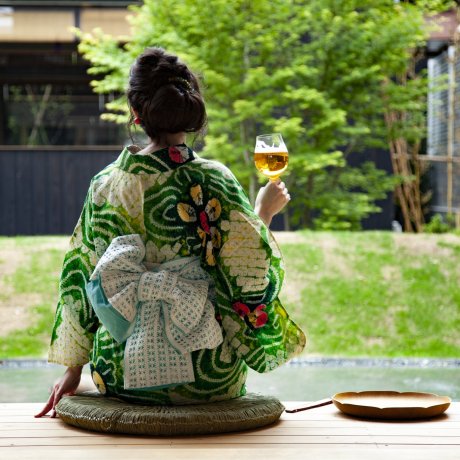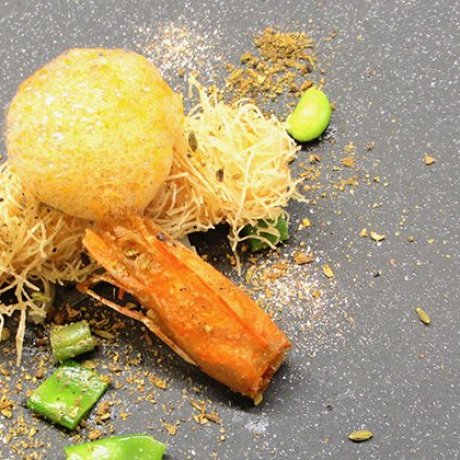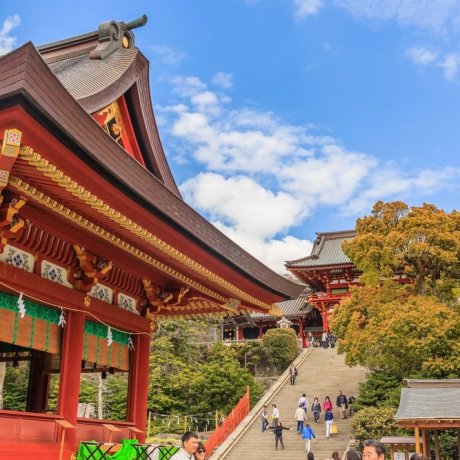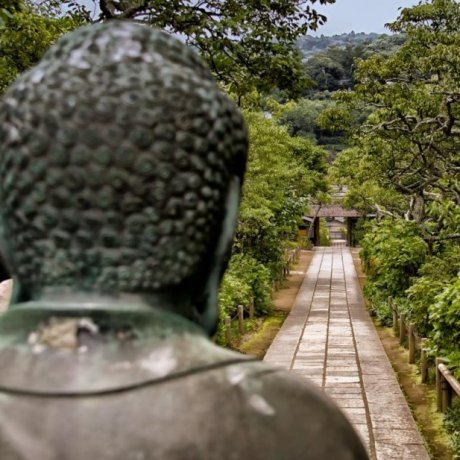
Zen Night Walk Kamakura 2025
This autumn, Kamakura’s historic Kenchoji Temple will host ZEN NIGHT WALK KAMAKURA, a nighttime event blending Zen tradition w..

Kenchoji is Kamakura’s oldest Zen temple and is recognized as the top temple of the city’s Five Great Zen Temples. It was originally founded by regent Hojo Tokiyori in 1253 as a Zen training temple, and its first head priest was a Chinese Zen priest named Rankei Doryu.
One of Kenchoji’s defining characteristics is its expansive temple grounds. After the gates and main area, the complex extends deep into the wooded hills. The temple’s main buildings feature traditional Chinese architecture and are arranged in a line, which is characteristic of Chinese Zen Buddhist temples.
Kenchoji’s entrance is marked by Somon, a relatively small, yet beautiful, wooden gate that leads to the main gate, Sanmon. This massive wooden structure is meant to relieve you of all your attachments. Just past Sanmon and to the right is the temple’s bell tower, and to the left is a revered juniper tree. This 13-meter-tall tree is estimated to be about 760 years old and allegedly sprouted from seeds brought from China during the temple’s construction.
After the gates, the temple buildings stand in a line down the complex. First is Butsuden (Buddha Hall), which enshrines the principal statue of the temple, Jizo Bodhisattva. Directly behind Butsuden is Hatto, the largest wooden temple building in Eastern Japan. When Kenchoji was strictly a training temple, monks would gather in Hatto to listen to priests’ lectures. Inside Hatto is a statue of Senju Kannon and a stunning ceiling painting of a dragon among the clouds. Past Hatto is Hojo; this building was initially the head priest’s residence, but today is popular for its picturesque Zen garden.
Sanmon, the bell tower, Butsuden, and Hatto are all designated as National Important Cultural Properties.
After the main temple grounds, a path goes further into the forested hillside to Hansobo. This small shrine is dedicated to Hansobo Daigongen, the guardian deity of the temple, and has a small observation deck. A little further past the shrine is a second observation deck where you can observe Mount Fuji on clear days. From this point, there is a one-hour hiking trail that leads to Zuisenji Temple.
Kenchoji is about a 15-minute walk from Kita-Kamakura Station and approximately a 25-minute walk from Kamakura Station.

This autumn, Kamakura’s historic Kenchoji Temple will host ZEN NIGHT WALK KAMAKURA, a nighttime event blending Zen tradition w..

Kencho-ji Temple was established as the first Zen-only training monastery in Japan starting in the late 1200s. In those days, there..

It was Saturday afternoon and I was at Kencho-ji Temple in Kita-Kamakura. A few minutes before two o’clock a bell rang to sign..
 17
17
Experience an alternative side to one of Kamakura`s most popular attractions, Kencho-ji Temple
 13
13
Hanzobo Shrine is much small and simpler than Kencho-ji, but can boast of a spectacular view, as well as some very beautiful statues...
 17
17
Located towards the back of Kamakura`s famous Kenchoji Temple is the peaceful hillside shrine of Hanzobo where you can meet many..
 11
11
An avatar God protecting Kencho-ji Temple is called Hanzobo. People believe Hanzobo has protective powers against fire, and the..

This autumn, Kamakura’s historic Kenchoji Temple will host ZEN NIGHT WALK KAMAKURA, a nighttime event blending Zen tradition w..

Taisen-kaku is a 100-year-old inn just seconds away from Hase Kanon Temple. The service they provide will leave you with a memorable..

Kishi-ke is traditional, yet modern, Japanese-style inn that aims to connect guests with the present and help them achieve inner..

Fujisawa is located close to such popular tourist destinations as Enoshima and makura. A traveler can get everything necessary for..

At the creative French restaurant, Nature et Sens, diners are treated to an experience for the senses. Seasonal ingredients and Kamakura produce take..

Taste Aratama's famous fried pork cutlet and fall in love with the fresh flavors. Tonkatsu isn't all that's on the menu. Be sure to try Aratama's..

Discover the taste that Kamakura locals are in love with. New German's fluffy custard-filled sponge cakes are a dessert that is sure to impress. The..

Fugenzan Meigetsu-in is a Rinzai Zen temple of the Kenchō-ji school in Kita-Kamakura, Kanagawa, Japan. Famous for its hydrangeas, it's also know..

Tsurugaoka Hachimangu Shrine is arguably the most important shrine in Kamakura and is located roughly in the center of the city. The shrine was originally..

Tokeiji, a Rinzai-sect temple of Zen Buddhism, is a branch temple of nearby Engakuji, which is a short 5-minute walk away. This important temple/nunnery..
Your feedback has been sent.